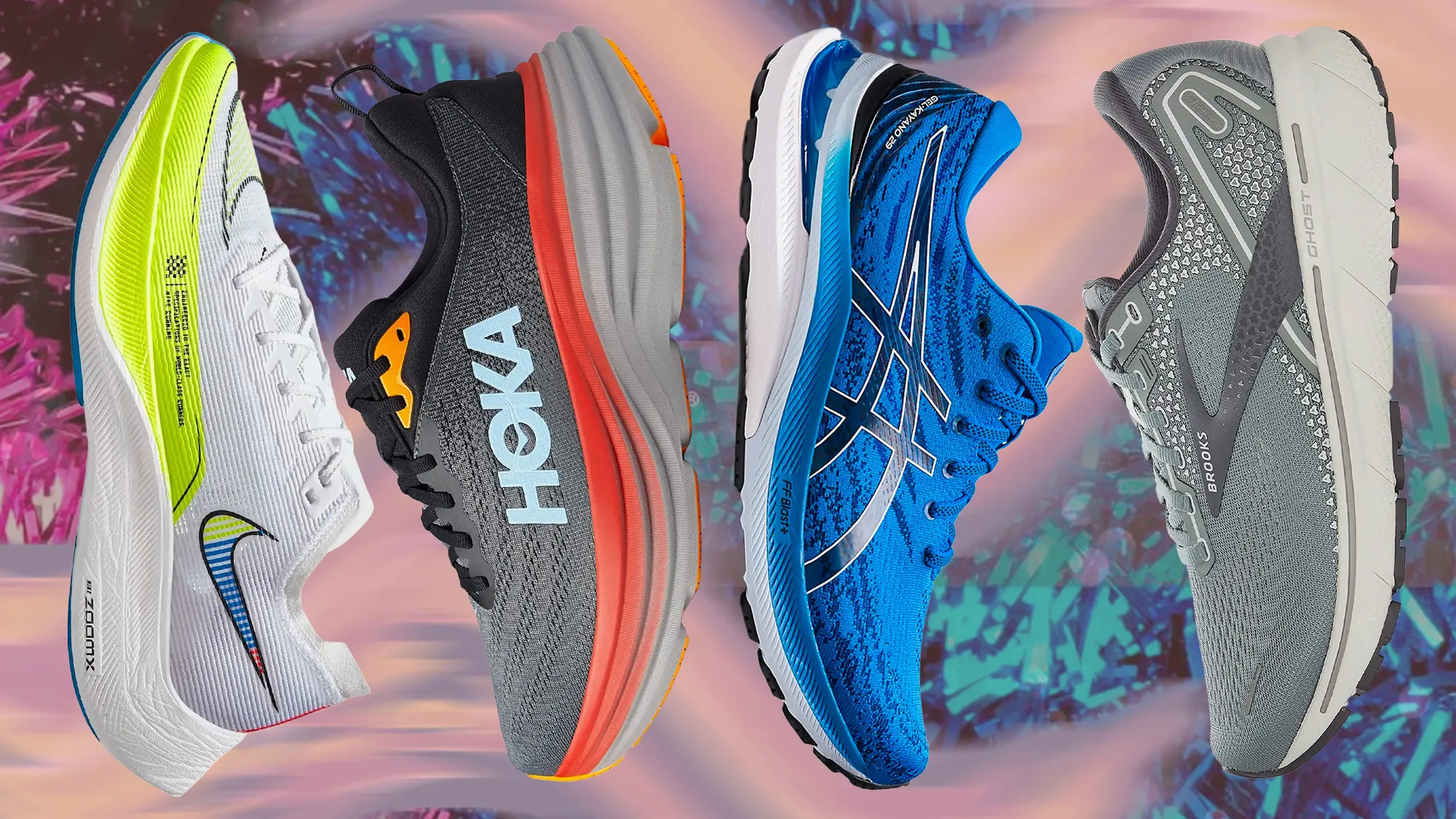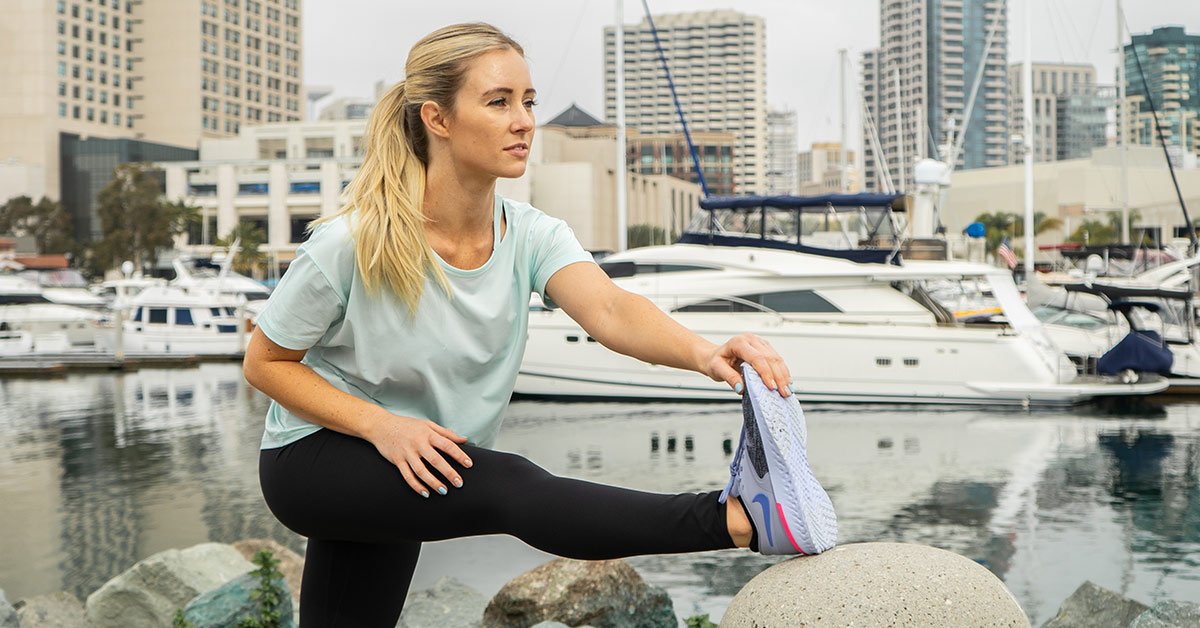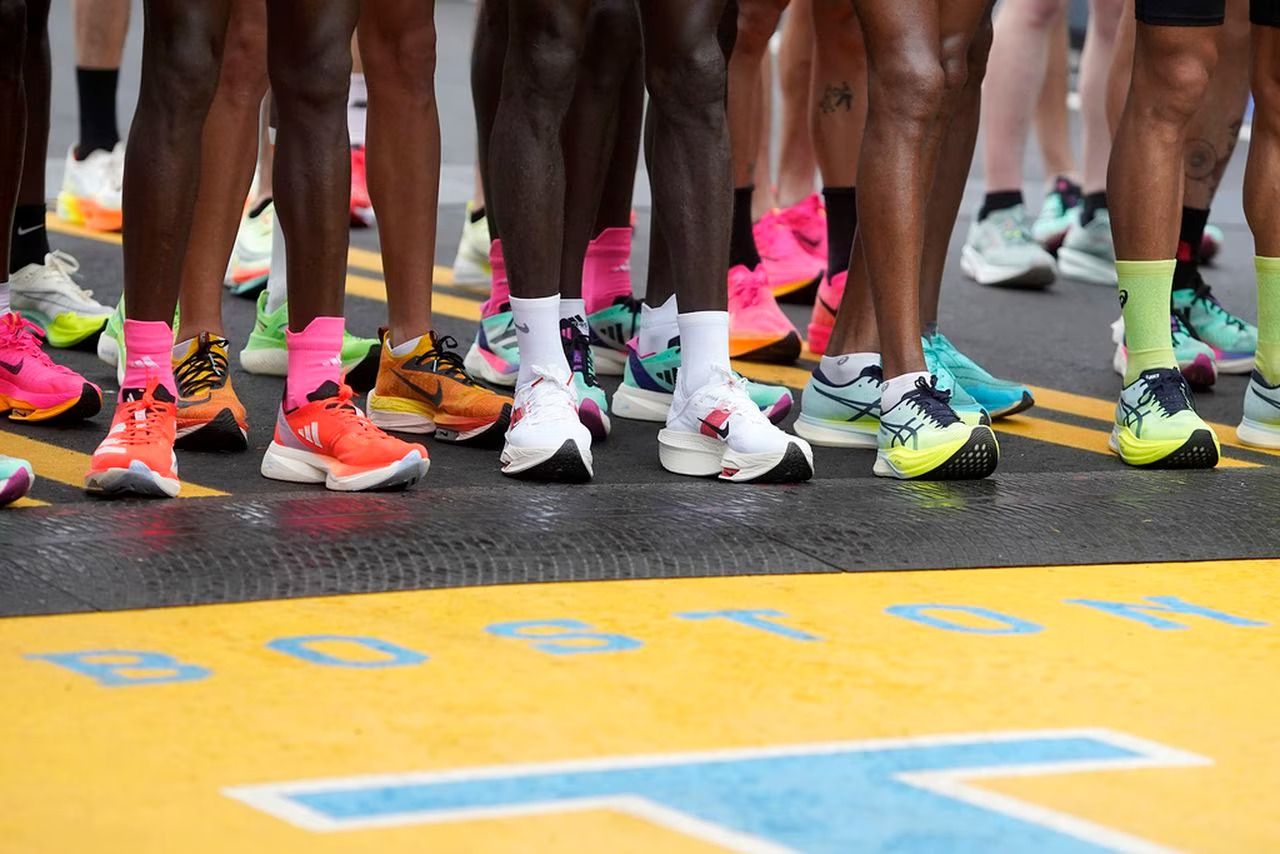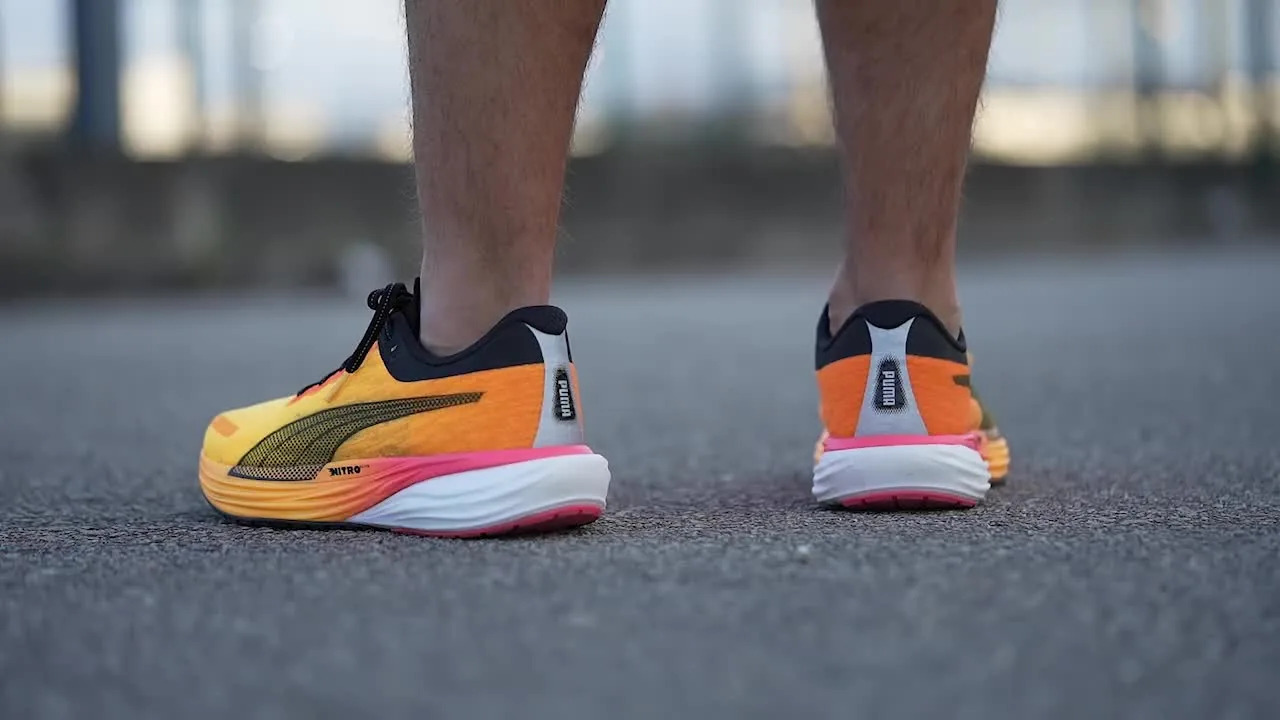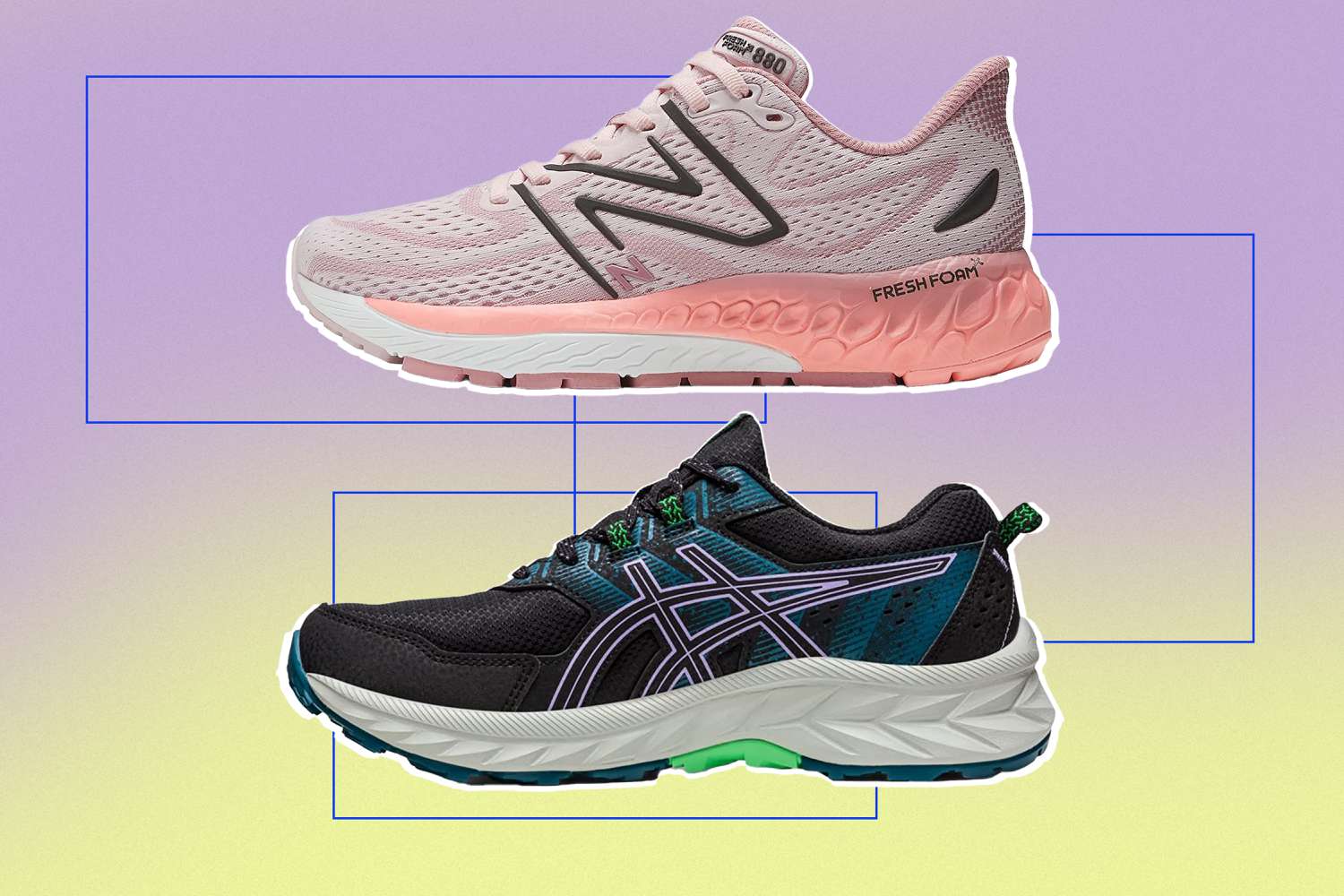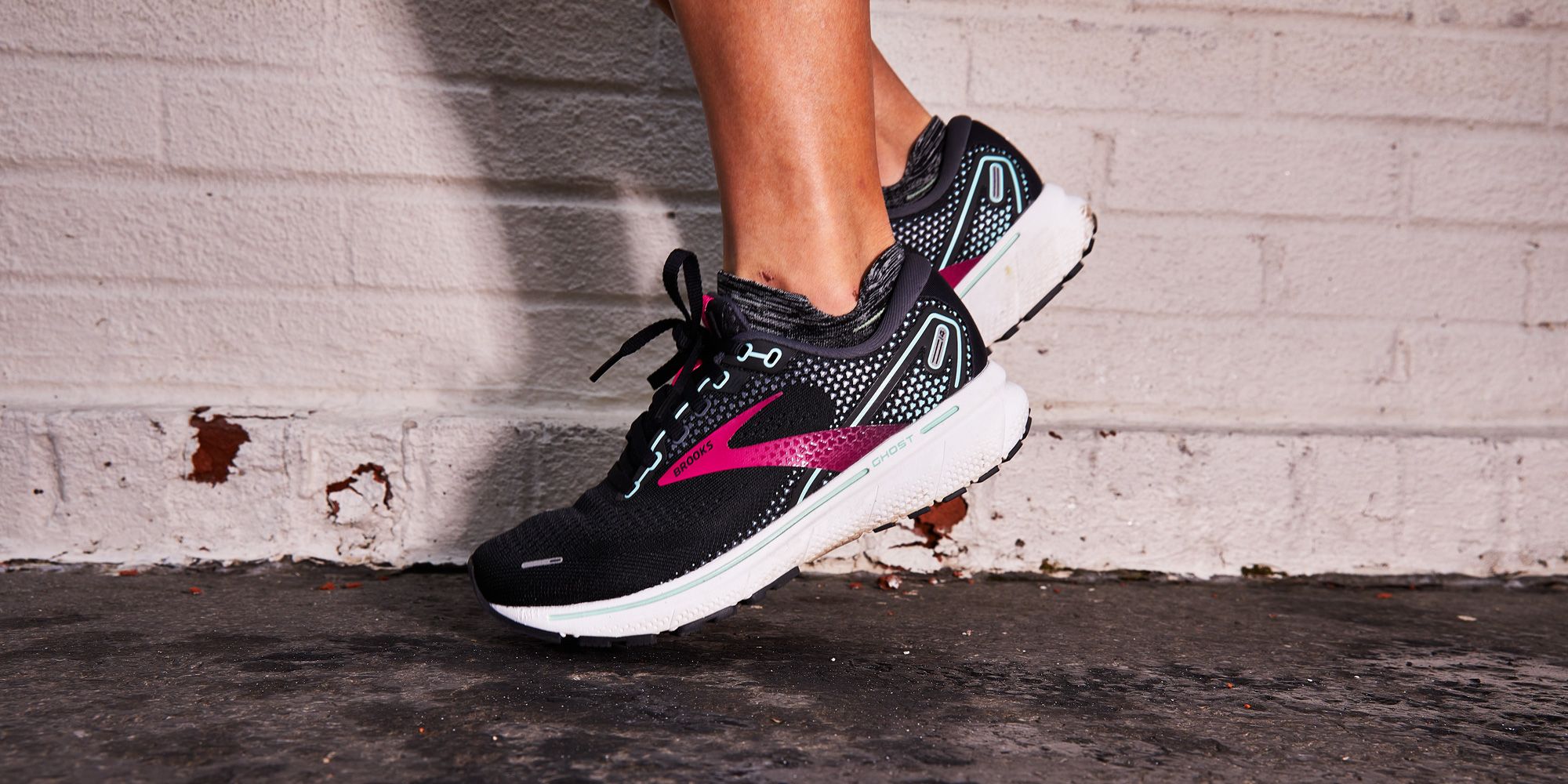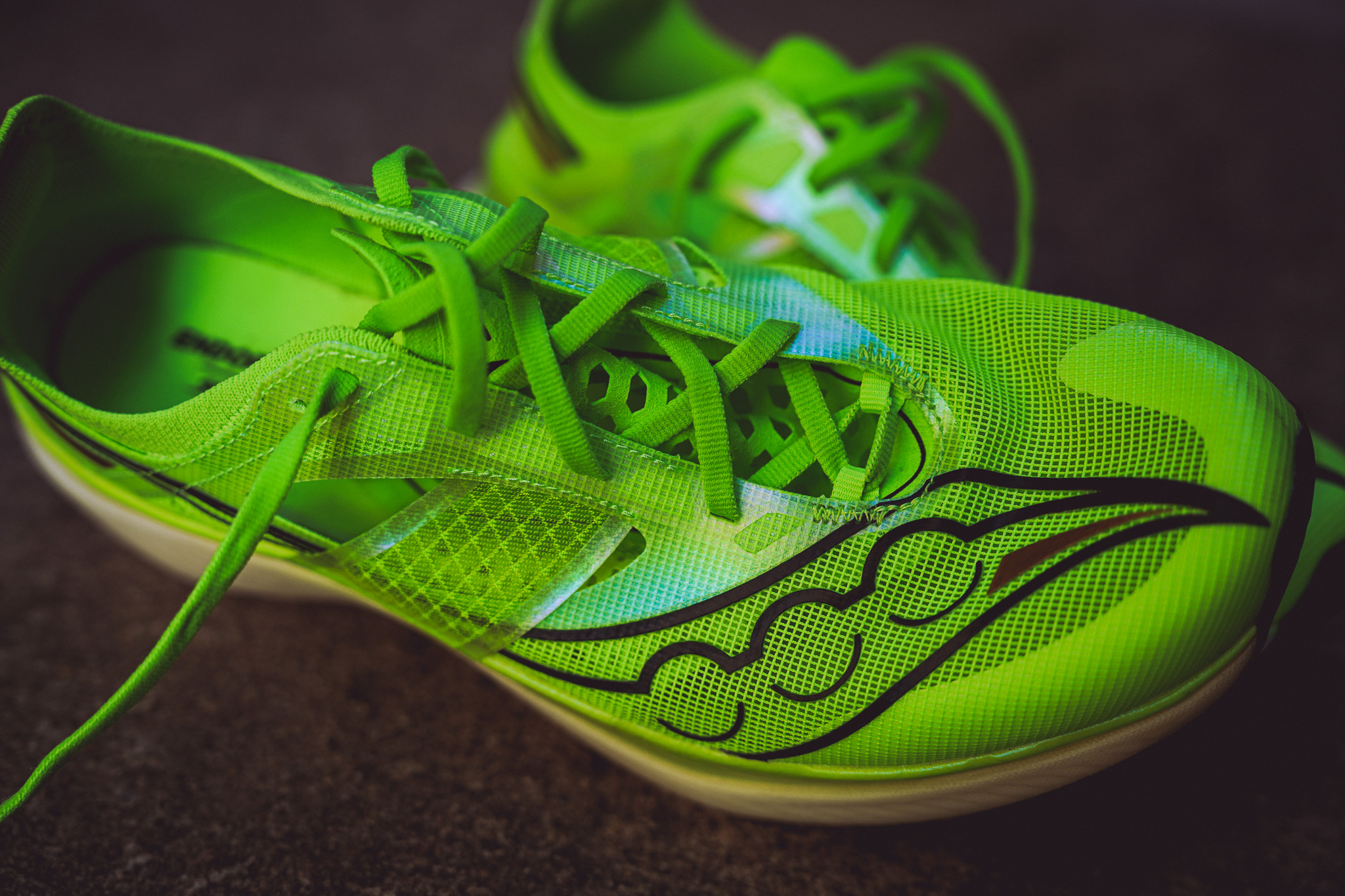

Featured
How To Choose Saucony Running Shoes
Modified: May 22, 2024
Discover the top tips for selecting the perfect Saucony running shoes. Find the best featured models for optimal comfort and performance.
Introduction
Welcome to the world of running! Whether you’re a seasoned marathoner or just starting out with a couch-to-5k program, finding the right pair of running shoes is crucial for your comfort and performance. With so many options available, it can be overwhelming to navigate through the various brands and technologies. However, one brand that consistently stands out is Saucony.
Saucony is a renowned athletic footwear company that has been producing high-quality running shoes for decades. They understand the needs of runners and strive to provide them with the best footwear options to help them achieve their goals. With a commitment to innovation and quality, Saucony has become a trusted name among runners of all levels.
In this article, we will guide you through the process of choosing the perfect pair of Saucony running shoes. We will discuss the different styles available, the key factors to consider, and provide some practical tips for trying on and testing the shoes. By the end of this article, you will be well-equipped to make an informed decision and hit the roads or trails in the right pair of Saucony shoes.
So, let’s lace up our shoes and dive into the world of Saucony running footwear.
Understanding Your Running Needs
When it comes to selecting the perfect pair of Saucony running shoes, it’s important to first understand your running needs. Every runner is unique, with specific goals, foot types, and preferences. By considering these factors, you’ll be able to find a shoe that suits your individual requirements.
Start by assessing your running goals. Are you training for a marathon and logging high mileage, or are you more of a recreational runner looking to stay fit? Understanding your running routine and the terrain you’ll be tackling will help determine the type of shoe you need.
Next, consider your foot type and biomechanics. This includes aspects such as arch height, pronation, and stability. Pronation refers to the natural inward roll of the foot during running, and it varies from person to person. Understanding whether you have neutral pronation, overpronation, or underpronation (supination) will guide you towards the right shoe with the appropriate level of support.
Saucony offers different shoe models designed to cater to various foot types and running styles. They classify their shoes into three main categories: neutral, stability, and motion control. Neutral shoes are suitable for runners with a normal arch and neutral pronation. Stability shoes provide added support for runners with mild to moderate overpronation. Motion control shoes are specifically designed for runners with severe overpronation.
Besides foot type, consider factors such as cushioning and support. Cushioning helps absorb impact and provide comfort, while support helps with stability and prevents excessive foot movement. Both factors play a crucial role in preventing injuries and enhancing performance.
Lastly, think about the type of terrain you’ll be running on. If you’ll be mostly on paved roads or treadmills, a road running shoe with adequate cushioning and traction will be suitable. However, if you plan on hitting the trails, consider a trail running shoe that offers enhanced grip and protection against uneven surfaces.
By understanding your running needs, foot type, and running style, you’ll be better equipped to choose the right Saucony running shoe that caters to your specific requirements.
Saucony’s Running Shoe Styles
Saucony offers a wide range of running shoe styles to cater to different needs and preferences. Let’s take a closer look at some of their popular models:
- Ride: The Saucony Ride series is known for its versatile performance. These shoes provide a balanced combination of cushioning and responsiveness, making them suitable for both long-distance running and speedwork. The Ride models tend to have a medium level of cushioning and are designed for neutral or slight overpronators.
- Guide: The Saucony Guide series is ideal for runners who need a touch of stability. With a comfortable and supportive ride, these shoes act as a middle ground between neutral and stability designs. They offer a moderate level of cushioning and are suitable for runners with mild to moderate overpronation.
- Triumph: The Saucony Triumph series is all about maximum cushioning. These shoes are designed to provide a plush and luxurious feel while still maintaining responsiveness. They are ideal for runners looking for a highly cushioned shoe for long-distance runs or for those who prefer extra comfort and support.
- Kinvara: The Saucony Kinvara series is known for its lightweight and responsive design. These shoes have a minimalistic feel with a lower heel-to-toe drop, making them suitable for runners who prefer a more natural running experience. The Kinvara models offer moderate cushioning and are popular among runners who value speed and agility.
- Perseverance: The Saucony Perseverance series is specifically designed for trail running. These shoes feature aggressive outsoles and durable uppers to provide traction, protection, and stability on rugged terrains. With their enhanced grip and rugged construction, they are perfect for exploring off-road trails and challenging environments.
Each Saucony running shoe style is engineered with specific technologies and materials to enhance performance, comfort, and durability. By understanding the characteristics of each style, you can easily narrow down the options to find the perfect match for your running needs.
Key Factors to Consider
When choosing the right pair of Saucony running shoes, there are several key factors to consider that go beyond just the shoe style. These factors will ensure that you find a shoe that fits well, provides the necessary support, and meets your specific running requirements. Let’s take a look at these essential considerations:
- Shoe Fit and Comfort: The fit of a running shoe is crucial for comfort and performance. Look for a shoe that offers a snug and supportive fit without being too tight or loose. Consider factors such as toe box width, arch support, and overall foot volume to find the right fit for your feet.
- Pronation and Stability: Understanding your pronation and stability needs will help you select a shoe with the appropriate level of support. Determine if you have neutral pronation, overpronation, or underpronation (supination) and choose a shoe that provides the right level of stability to prevent excessive foot movement and potential injuries.
- Cushioning and Support: The level of cushioning and support needed will depend on your running preferences and the distance you plan to cover. Consider the amount of cushioning you prefer and whether you need extra support features, such as medial posts or stability plates, to ensure a comfortable and balanced running experience.
- Durability and Traction: Look for a shoe that is built to withstand the demands of running and provides excellent traction. Consider the durability of the outsole and the materials used in the upper to ensure that the shoe can hold up well over time, especially if you plan on running frequently or on rough terrains.
- Personal Preference and Budget: While it’s important to consider technical aspects, don’t forget about your personal preferences and budget. Consider factors such as shoe weight, color options, and price range to find a shoe that aligns with your style and financial constraints.
By carefully considering these key factors, you can narrow down your options and choose the perfect pair of Saucony running shoes that provide the right fit, support, and performance for your running needs.
Shoe Fit and Comfort
One of the most important factors to consider when choosing Saucony running shoes is the fit and comfort level. A shoe that fits well and provides optimal comfort is essential for an enjoyable running experience. Here are some key points to consider:
- Proper Sizing: Ensure that you know your correct shoe size before purchasing Saucony running shoes. Sizes may vary slightly between brands, so it’s important to measure your feet accurately and refer to Saucony’s size chart. Remember, your feet may expand slightly during a run, so choose a size that allows for some wiggle room.
- Toe Box Width: Consider the width of the toe box in relation to your foot shape. Some individuals have wider feet and require a roomier toe box, while others may have narrower feet and prefer a more snug fit. A proper toe box width will prevent discomfort, blisters, and toe jamming.
- Arch Support: Determine your arch type – high, medium, or low – and select a shoe that offers the appropriate level of arch support. Saucony offers shoes with different arch support options, providing customized comfort for different foot types.
- Heel Lock: Look for a shoe with a secure heel lock to prevent slippage and provide stability during your runs. A well-fitting heel ensures that your foot stays in place, reducing the risk of rubbing and blisters.
- Upper Material: Evaluate the upper material of the shoe to determine if it delivers a comfortable, breathable, and supportive fit. Saucony uses a variety of materials, such as mesh, synthetic overlays, and knit uppers, to offer a balance of flexibility, ventilation, and support.
- Cushioning: Consider the amount of cushioning you prefer in a running shoe. Some runners prefer a plush feel with maximum cushioning, while others prefer a more minimalistic and responsive ride. Choose a shoe that aligns with your comfort preferences, keeping in mind the impact absorption required for your running style and mileage.
- Insole Options: Saucony offers various insole options, allowing you to customize your level of comfort and support. Some models provide removable insoles that can be replaced with orthotics or specialized insoles if needed.
Remember, personal preference plays a significant role when it comes to shoe fit and comfort. It’s essential to try the shoes on and walk around before making a decision. Pay attention to any discomfort or pressure points and trust your instincts. Your feet should feel supported and comfortable, with no excessive rubbing or tight spots.
By prioritizing the fit and comfort of Saucony running shoes, you’ll be well on your way to finding the perfect pair that will accompany you on many miles of enjoyable running.
Pronation and Stability
Understanding your pronation and stability needs is crucial when choosing Saucony running shoes. Pronation refers to the natural inward roll of the foot as it strikes the ground during running. It is an essential biomechanical movement that helps absorb shock and distribute forces evenly. However, excessive pronation or the lack of it can lead to imbalances and potential injuries. Here are some key points to consider:
- Types of Pronation: There are three main types of pronation:
- Neutral Pronation: The foot rolls inward slightly to distribute the impact evenly, providing efficient shock absorption.
- Overpronation: The foot rolls excessively inward, placing additional stress on the arch and inner side of the foot.
- Underpronation (Supination): The foot doesn’t roll inward enough, and the impact is concentrated on the outer side of the foot.
- Selecting the Right Shoe: Saucony offers running shoes with different levels of stability to accommodate varying pronation needs:
- Neutral Shoes: These shoes are designed for runners with neutral pronation or slight underpronation. They provide a balance of cushioning and flexibility without excessive support.
- Stability Shoes: These shoes are equipped with features that offer additional support and help correct overpronation. They have firmer midsoles and supportive elements to help stabilize the foot.
- Motion Control Shoes: These shoes are specifically designed for runners with severe overpronation. They provide maximum support and stability to control excessive inward rolling and promote proper alignment.
- Understanding Your Pronation: It’s important to determine your pronation type to choose the right level of stability in a shoe. You can consult a podiatrist or undergo a gait analysis test at a specialty running store to accurately assess your pronation.
- Combining Pronation with Other Factors: Pronation should be considered alongside other factors, such as arch height and running style, for a comprehensive understanding of your foot mechanics. For instance, runners with low arches (flat feet) are more prone to overpronation and may require greater stability in their shoes.
- Gradual Transition: If you have been used to highly supportive shoes in the past but would like to transition to a lower stability shoe, it’s important to do so gradually. Abruptly switching to a shoe with less support might increase the risk of discomfort or injuries.
By understanding your pronation type and selecting the appropriate level of stability in Saucony running shoes, you can promote optimal foot function, reduce the risk of injuries, and enhance your overall running experience.
Cushioning and Support
When choosing Saucony running shoes, it’s important to consider the level of cushioning and support that will best suit your needs. Cushioning provides impact absorption, while support helps maintain stability and prevents excessive foot movement. Finding the right balance of both factors is essential for a comfortable and enjoyable running experience. Here are some key points to consider:
- Amount of Cushioning: The level of cushioning you prefer will depend on your personal preference and running style. Some runners prefer a cushioned shoe with maximum shock absorption, ideal for long-distance runs or those with a history of foot or joint issues. Others might prefer a more minimalistic and responsive shoe with less cushioning for a lighter and more natural running experience.
- Impact Absorption: Cushioning in running shoes helps absorb the impact forces generated with each footstrike, reducing stress on the joints and muscles. Look for Saucony models with adequate midsole cushioning to provide the level of shock absorption you desire.
- Support Features: Support features in Saucony running shoes can include elements such as medial posts, stability plates, or arch supports. These features help control excessive foot movement, or pronation, and provide additional stability. If you have mild to moderate pronation, selecting a shoe with supportive features can help maintain proper foot alignment and prevent potential injuries.
- Running Distance and Terrain: Consider the distance you typically run and the type of terrain you frequent. Longer distances may require more cushioning to provide sustained comfort over extended periods. Additionally, if you often run on uneven or challenging surfaces, a shoe with extra support and protection may be beneficial.
- Weight of the Shoe: Keep in mind that as the level of cushioning and support increases, so does the weight of the shoe. Consider your preferences and running goals to determine the right balance of cushioning, support, and weight that meets your requirements.
- Personal Comfort: Comfort is subjective, and what works for one runner may not work for another. It’s crucial to try on different Saucony models to assess how they feel on your feet. Pay attention to any discomfort, pressure points, or areas that need extra support, and choose a shoe that meets your personal comfort needs.
By considering the level of cushioning and support that aligns with your running preferences, distances, and comfort needs, you can find the perfect pair of Saucony running shoes that offer optimal protection, stability, and support throughout your runs.
Durability and Traction
When selecting Saucony running shoes, it’s essential to consider the durability and traction of the shoe. These factors play a significant role in ensuring the longevity of the shoe and providing the necessary grip during your runs. Here are some key points to consider:
- Outsole Durability: The outsole is the bottom part of the shoe that comes in direct contact with the ground. Look for Saucony models with durable outsole materials, such as carbon rubber or blown rubber. These materials are known for their long-lasting performance and resistance to wear and tear.
- Upper Construction: The upper of the shoe, which encompasses the top part, should be made of quality materials that can withstand the demands of running. Consider Saucony models that use durable and breathable fabrics or mesh materials. Reinforcements or overlays in high-stress areas can enhance the shoe’s durability and structural integrity.
- Resistance to Abrasion: A durable shoe should be resistant to abrasion from various surfaces encountered during running. Look for Saucony shoes with reinforced areas, such as toe guards or overlays, to protect against scuffs and wear in high-friction areas.
- Traction: Traction is crucial, especially if you run on trails or in inclement weather conditions. The outsole should have a multidirectional tread pattern or lugs that provide excellent grip and traction on various surfaces, including wet or uneven terrain. Consider Saucony trail running shoe models that are specifically designed to deliver better traction and grip on rugged trails.
- Flexibility: The shoe’s flexibility is also important for durability and traction. A shoe that offers a balance between flexibility and stability will allow for a more natural foot movement while providing necessary support and protection. Look for Saucony models with flex grooves or a flexible midsole that allows the shoe to adapt to your foot movement.
- Review and Research: Before purchasing Saucony running shoes, take the time to read reviews and research the durability and traction of different models. This can provide valuable insights from fellow runners and help you make an informed decision.
By considering the durability and traction of Saucony running shoes, you can ensure that the shoes will withstand the demands of your running routine and provide the necessary grip and stability for a safe and enjoyable running experience.
Personal Preference and Budget
When it comes to choosing Saucony running shoes, personal preference and budget are important factors to consider. Understanding your preferences and financial constraints will help you find a shoe that not only meets your running needs but also aligns with your style and budget. Here are some key points to consider:
- Running Style and Goals: Consider your running style and goals when choosing a pair of Saucony running shoes. Are you a long-distance runner, a speed enthusiast, or someone who enjoys a casual jog? Different shoe models are designed to cater to specific running styles, so choosing a shoe that aligns with your preferences and goals is essential.
- Weight and Flexibility: Consider the weight and flexibility of the shoe as it can impact your performance. Some runners prefer lightweight and highly flexible shoes that offer a more natural feel, while others may prioritize support and stability over flexibility. Choose a shoe that matches your preferences and running style.
- Color and Design: While it may not directly impact performance, the color and design of the shoe can play a role in your satisfaction. Saucony offers a range of color options and styles, allowing you to choose a shoe that reflects your personality and makes you feel confident during your runs.
- Budget Considerations: Running shoes come in a wide price range, so it’s important to set a budget and find a shoe that fits within your financial constraints. Saucony offers options for different budgets, ensuring that you can find a quality running shoe without breaking the bank.
- Value for Money: Consider the overall value for money when choosing Saucony running shoes. While budget is important, it’s also imperative to assess the shoe’s durability, performance, and the reputation of the brand. Investing in a quality pair of shoes that deliver long-lasting performance may be a wise decision in the long run.
- Customer Reviews: Reading customer reviews and feedback can provide valuable insights into the performance, comfort, and durability of Saucony running shoes. Take the time to do some research and understand the experiences of other runners who have used the shoes you are interested in.
By considering your personal preferences, running goals, and budget, you can find the perfect pair of Saucony running shoes that not only meet your performance needs but also align with your style and financial requirements.
Trying on and Testing the Shoes
Once you have narrowed down your options and identified potential Saucony running shoes that meet your needs, it’s time to try them on and test them out to ensure the perfect fit and optimal performance. Here are some key points to consider when trying on and testing the shoes:
- Go to a Specialty Running Store: Visit a specialty running store, if possible, where knowledgeable staff can assist you in finding the right Saucony shoe based on your preferences, foot type, and running style. They can provide valuable guidance and expertise throughout the fitting process.
- Try on Both Shoes: When trying on the shoes, make sure to try on both the left and right shoe. Feet can slightly differ in size and shape, and it’s important to ensure a comfortable fit for both feet.
- Bring Your Own Socks: Wear the socks that you typically use for running when trying on the shoes. This will give you a better sense of how the shoes will fit and feel during your actual runs.
- Walk and Jog Around: Don’t be afraid to walk and jog around the store or designated area to get a feel for the shoes. Take notice of any areas of discomfort, rubbing, or pressure points.
- Paying Attention to Fit: Pay attention to the fit of the shoe. It should feel snug, but not overly tight. Your toes should have a little room to wiggle, and there should be no slipping or excessive movement of the foot inside the shoe.
- Assess Comfort and Support: Evaluate the overall comfort and support of the shoe. Notice if there are any areas that feel overly cushioned or lack support. The shoe should provide a balance between comfort and stability.
- Consider Orthotics or Insole Options: If you use orthotics or have specific needs for insoles, bring them along to test with the shoes. This will help ensure that there’s enough space and support for your custom inserts.
- Ask About Return and Exchange Policy: Inquire about the store’s return and exchange policy before making a purchase. This will give you peace of mind knowing that you have the option to exchange or return the shoes in case they don’t meet your expectations after a trial run.
- Test the Shoes on a Run: If possible, take the shoes for a short run outside the store or on a treadmill. This will give you a better feel for how the shoes perform during actual running conditions.
By taking the time to try on and test the Saucony running shoes before making a purchase, you can ensure a proper fit, optimal comfort, and the confidence that you have selected the right shoes to support your running adventures.
Conclusion
Choosing the perfect pair of Saucony running shoes is a crucial step in optimizing your running experience. By considering factors such as your running needs, pronation, cushioning, stability, durability, personal preferences, and budget, you can find a shoe that meets your specific requirements.
Understanding your running goals, foot type, and biomechanics will guide you towards selecting the appropriate level of support and stability in a shoe. Saucony offers a range of running shoe styles, each designed to cater to different needs and preferences. Whether you’re a neutral runner, in need of stability, seeking maximum cushioning, or conquering the trails, Saucony has a shoe tailored for you.
Additionally, ensuring a proper fit and comfort level is vital. Consider factors such as sizing, toe box width, arch support, heel lock, upper material, and insole options. Be sure to take the time to try on and test the shoes to ensure that they provide the desired comfort and support.
Finally, personal preferences and budget should be considered. Evaluate your running style, color and design preferences, and financial constraints to find a shoe that aligns with your style and budget. It’s important to find the right balance between value for money and the specific features and performance you desire.
By carefully considering these factors and taking the time to try on and test the Saucony running shoes, you can confidently select a pair of shoes that will enhance your running performance, provide optimal comfort, and withstand the rigors of your running routine.
So, lace up your Saucony shoes, hit the roads or trails, and enjoy the exhilarating feeling of running in footwear that supports your every stride!

